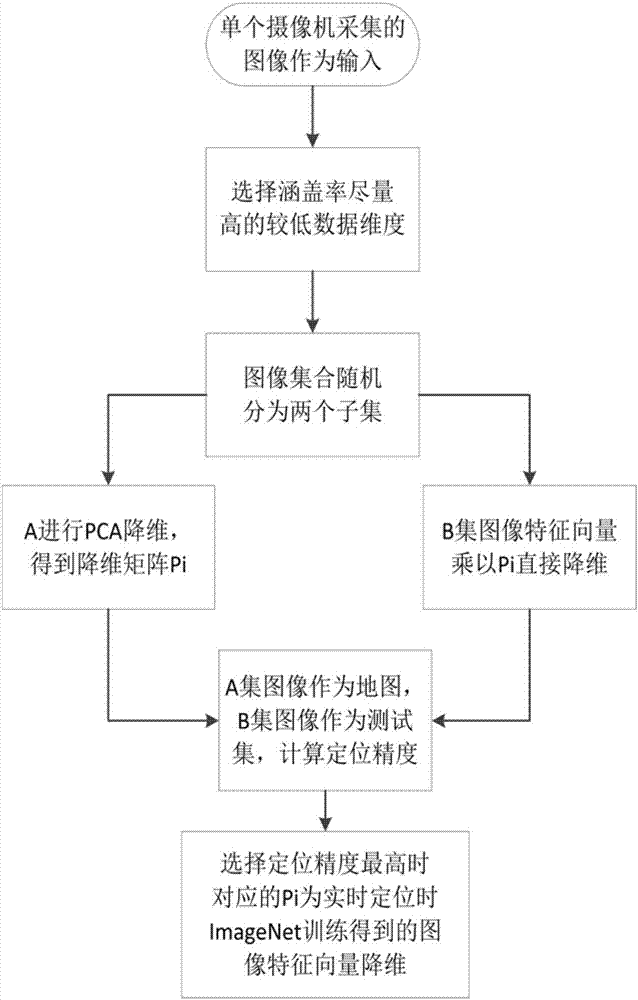Unmanned vehicle monocular vision positioning method based on image characteristic dimensionality reduction
A technology of image features and monocular vision, applied in image analysis, image data processing, graphics and image conversion, etc., can solve the problems of slow computing speed, large amount of data, poor robustness, etc., reduce the probability of mislocation and ensure robustness Sticky, robust effects
- Summary
- Abstract
- Description
- Claims
- Application Information
AI Technical Summary
Problems solved by technology
Method used
Image
Examples
Embodiment
[0030] Such as figure 1 Shown, flow process of the present invention is:
[0031] 1. For the input image, the global feature description is performed through the deep convolutional neural network DCNN, and the third convolutional layer is extracted as the image feature.
[0032] For the input image, the global feature description is performed by a deep convolutional neural network DCNN. This method uses the AlexNet network in the Tensorflow framework. The network won the championship in the 2012 imagenet image classification competition. The network structure has 5 convolutional layers, and 3 fully connected layers. Each convolutional layer contains activation functions and local response normalization, and then After pooling. It has been proved by practice that the 64896-dimensional features extracted by the third-layer convolutional network (cov3) are the most robust, and the scene can still be recognized when the environment changes greatly.
[0033] 2. Select a part (a...
PUM
 Login to View More
Login to View More Abstract
Description
Claims
Application Information
 Login to View More
Login to View More - R&D
- Intellectual Property
- Life Sciences
- Materials
- Tech Scout
- Unparalleled Data Quality
- Higher Quality Content
- 60% Fewer Hallucinations
Browse by: Latest US Patents, China's latest patents, Technical Efficacy Thesaurus, Application Domain, Technology Topic, Popular Technical Reports.
© 2025 PatSnap. All rights reserved.Legal|Privacy policy|Modern Slavery Act Transparency Statement|Sitemap|About US| Contact US: help@patsnap.com

